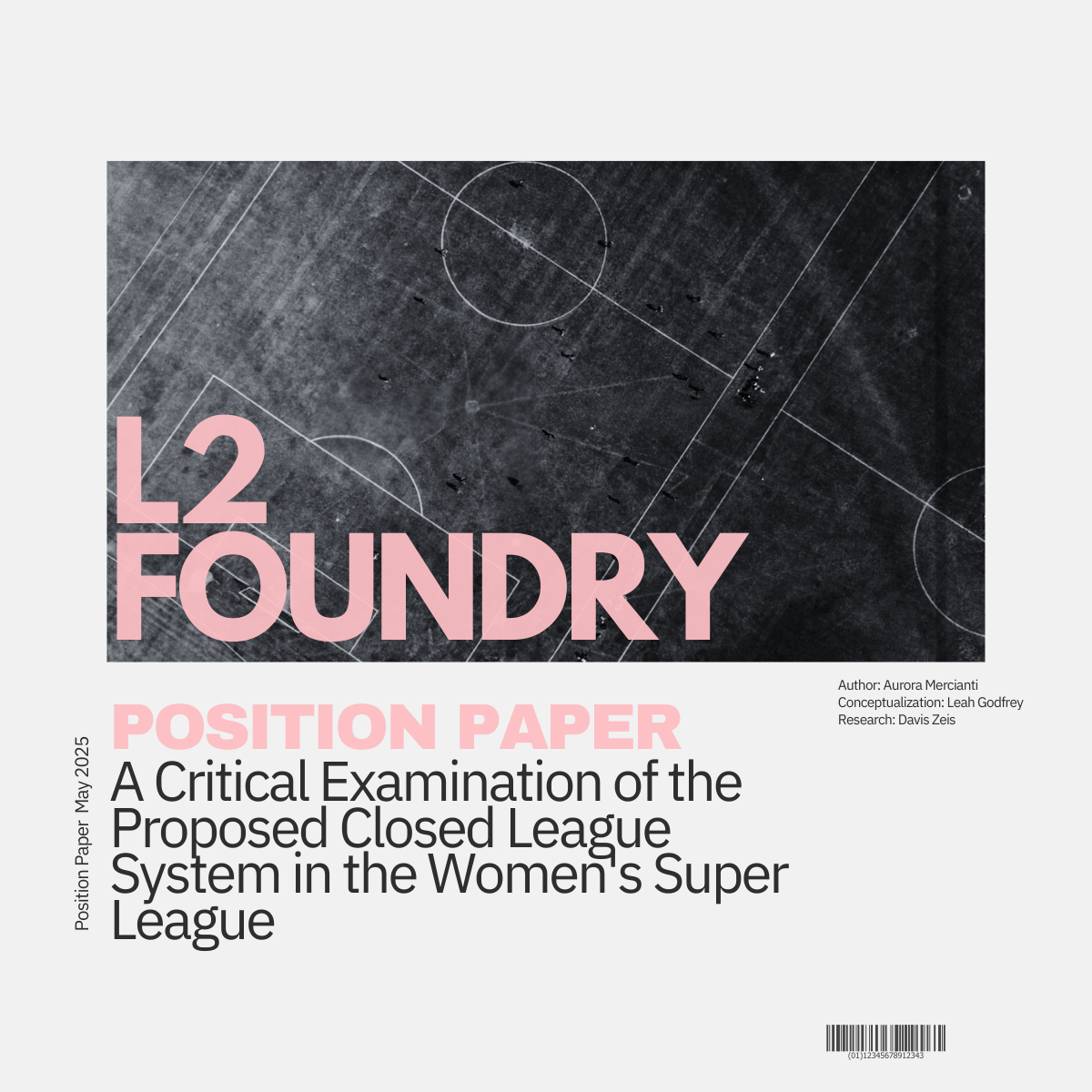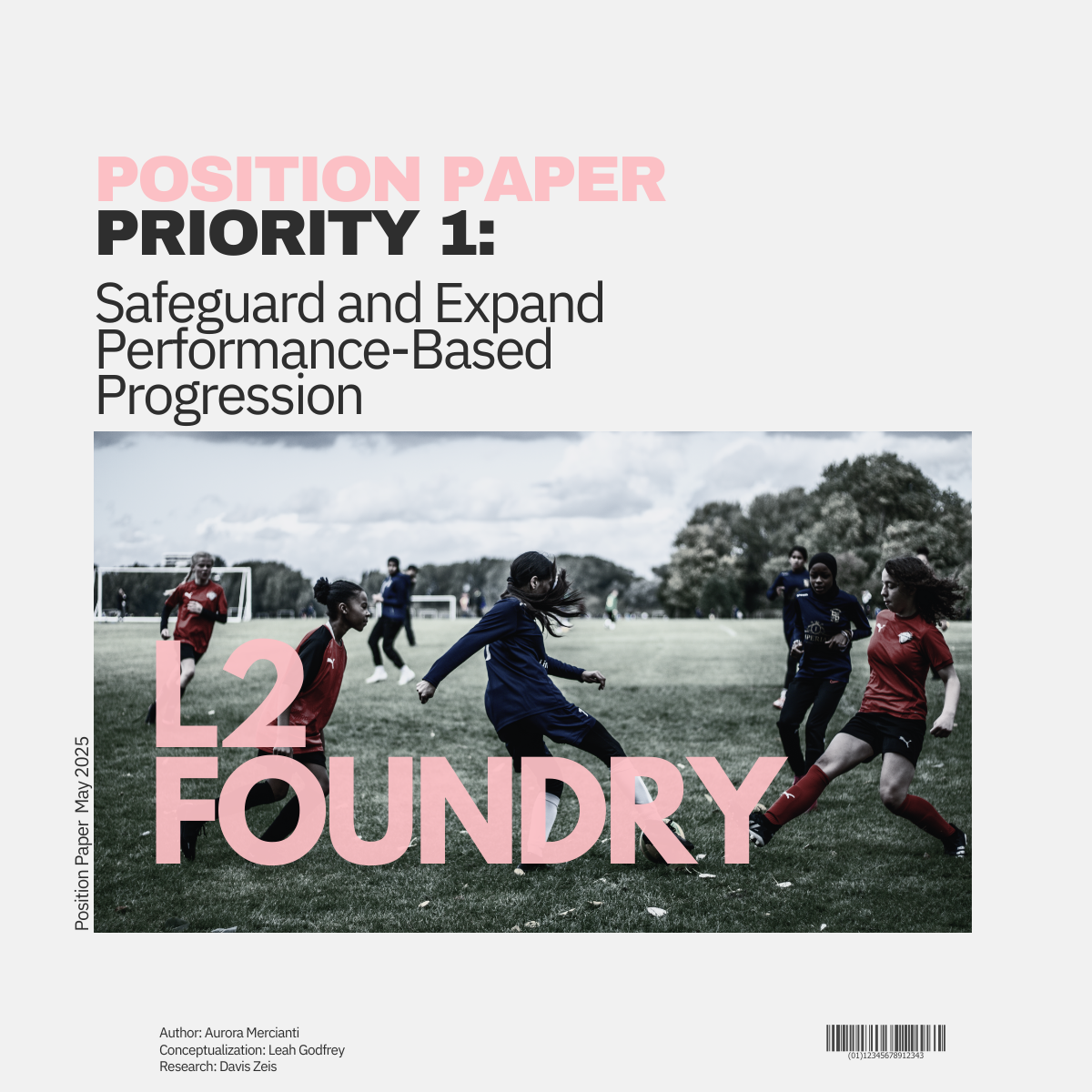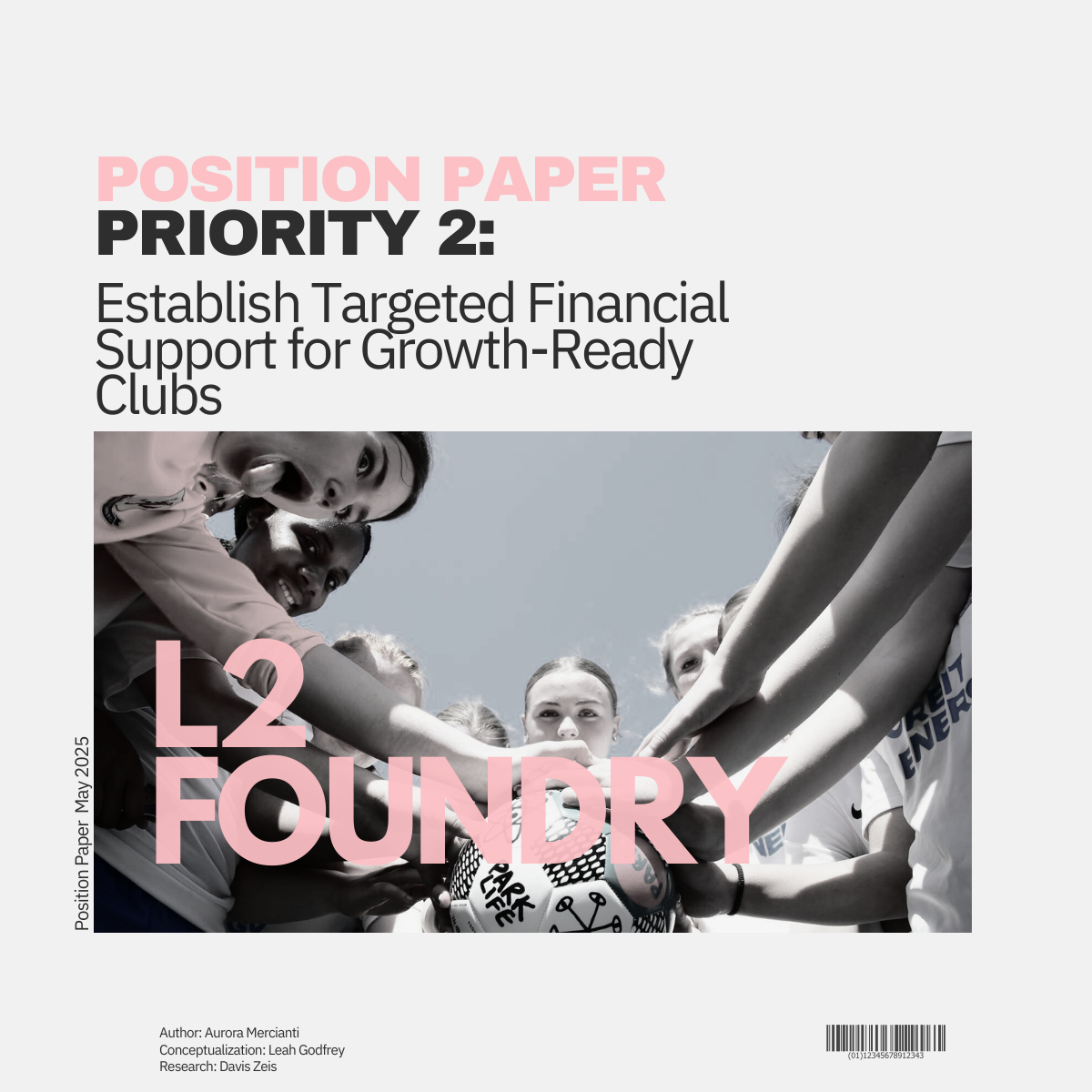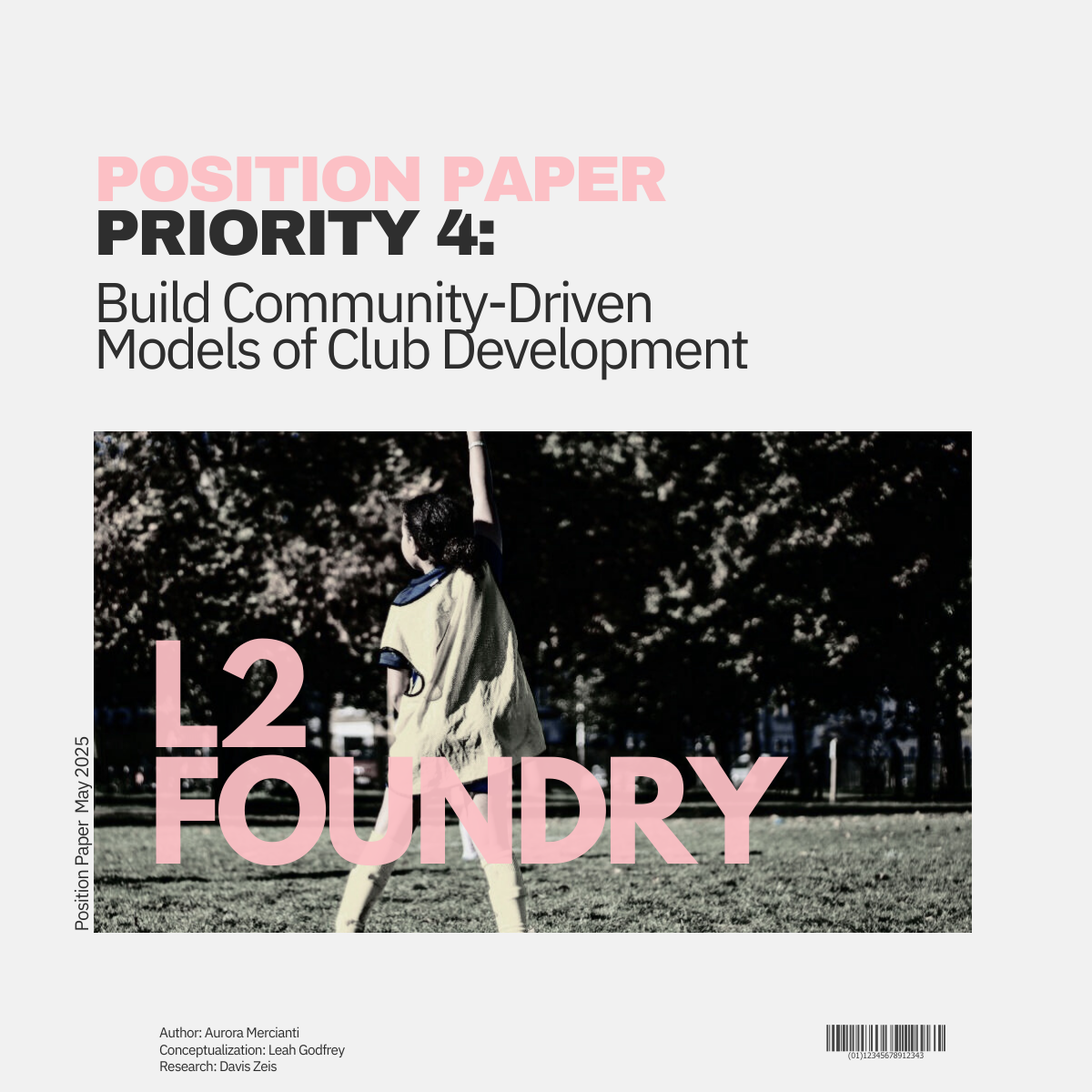
Position Paper
A Critical Examination of the Proposed Closed League System in the Women's Super League
1. Introduction
The Women’s Super League has rapidly evolved into one of the most prominent platforms for women’s football globally. As of 2025, proposals have emerged to convert the WSL into a closed league system by the 2026/27 season. While the intention is to ensure financial stability and attract sustained investment, such a structural change would be detrimental to the league’s growth, competitive balance, and foundational ethos of merit-based advancement (Deloitte, 2023). According to the FA’s published strategy, the goal is to professionalise and expand women’s football through sustainable investment—but that sustainability must include opportunity, equity, and inclusion at all tiers of the pyramid (FA, 2020; FA, 2024).
2. The Role of Promotion and Relegation in Competitive Balance
Promotion and relegation are cornerstones of English football, providing performance-based mobility and maintaining high competitive standards. Removing these mechanisms risks creating a stagnant league where underperforming teams lack consequences, reducing overall viewer engagement and match intensity. Academic literature confirms that open leagues generate greater utility for all stakeholders by incentivising performance (Noll, 2002).
Pawlowski et al. (2010) demonstrate that leagues with promotion and relegation systems report higher fan engagement and attendance, particularly in lower-tier matches where stakes remain high. Such mechanisms are especially critical to women's football, where visibility and competitive equity are still developing.
3. Financial and Structural Ramifications
An open league system supports financial equity and club development across all tiers. Academic evidence shows that closing a league tends to concentrate resources at the top and suppress investment in grassroots and mid-tier institutions (Noll, 2002).
A comparable trend is seen in other sports. Women’s basketball in the UK, for example, receives disproportionately less investment than men’s, despite the success of female athletes in international competitions. Agha (2021) underscores the persistent underfunding of women’s basketball, with athletes often training in substandard facilities and relying on part-time roles, even after landmark victories by national teams.
Meanwhile, in cricket, the move toward professionalisation has taken an inclusive approach. In November 2024, the ECB launched its first fully professional domestic women’s cricket league, enabled by earlier developments such as The Hundred. Fletcher (2023) explains that this league’s semi-professional model laid the groundwork for accessible talent development and sustainable growth. Research on long-term athlete development also highlights the vital roles that institutional support provides, scheduling accommodations, financial assistance, and access to facilities. As well as providing geographical mobility in sustaining athlete retention and progression. A 2025 review of dual-career athletes emphasizes that “institutional support” including flexible academic programs, mentorship, and proximity to sports and facilities, emerges as being essential for both increasing engagement and reducing isolation among athletes balancing sport and education (De Maio, et al., 2025)
4. International Comparisons and Lessons Learned
The North American Major League Soccer (MLS) model—structured without promotion or relegation—demonstrates the downsides of a closed league format. As highlighted by Crisp (2023), the absence of relegation results in lower stakes for bottom-tier clubs and reduces end-of-season competitiveness.
The Canadian Women's Hockey League (CWHL) collapse in 2019 further illustrates the risks of closed systems. A Reuters (2019) investigation into the league’s failure revealed that its centralised, top-down structure—detached from community input and financial sustainability—ultimately alienated its core stakeholders.
Burton (2015) highlights how systemic bias within sports leadership reinforces the underrepresentation of women, restricting opportunities for meaningful decision-making and visibility across all levels of sport. These institutional barriers often lead to top-down, exclusionary governance models that neglect grassroots growth and alienate potential fan bases. Similarly, Sherry, Osborne, and Nicholson (2016) show how media and commercial narratives in sport overwhelmingly prioritise male athletes, contributing to a culture that sidelines women’s sports and undermines long-term engagement. Applying these findings to the current debate around closing the WSL, it becomes clear that adopting a closed-league structure risks replicating these exclusionary dynamics. Rather than concentrating control and access, the WSL should remain open to preserve community connection, promote gender equity, and ensure that the league’s growth remains inclusive, merit-based, and sustainable.
5. Stakeholder Perspectives and League Leadership
Baroness Sue Campbell, Director of Women’s Football at the FA, has consistently emphasised the importance of accessibility and opportunity in the development of the women’s game. In a 2024 interview with The Guardian, she stated: “The job is not done… We’ve just lit the fire. Now we’ve got to fan the flames. And that means a genuine pathway for girls from every part of society” (Campbell, 2024).
She reflected on the legacy of England’s success and the FA’s wider strategy, noting: “This has never been about elitism. We want every girl to feel they belong in football – from the park to the stadium.” Her remarks reinforce the need to preserve structures that promote inclusivity and opportunity at all levels of the game. Removing promotion and relegation risks severing that pathway and diminishing the grassroots-to-elite pipeline that has underpinned the WSL’s growth.
Baroness Campbell further warned that the future of women’s football “can’t be about a few clubs at the top – it has to be about a whole movement.” Her insights reinforce the argument that closing the league would contradict the values upon which the WSL and the wider football pyramid were built.
The Football Association’s recent reversal on expanding the women’s football pyramid further highlights a pattern of reactive governance in the women’s game, often marked by limited stakeholder consultation and a lack of long-term strategic cohesion. While the FA initially announced the restructuring of the pyramid with a clear intention to enhance professionalism and sustainability (Sportcal, 2024), the plan was later abandoned due to pushback from clubs and logistical barriers (The Independent, 2025). On June 4, 2025, the FA confirmed final club allocations for the upcoming season without implementing the proposed expansion, citing insufficient infrastructure and consultation as key concerns (The FA, 2025). While this shift may demonstrate responsiveness, it also signals institutional inconsistency. The proposal to close the WSL now follows this trend of abrupt, top-down restructuring and ultimately risks eroding trust while offering limited tangible benefit to the game or its players.
There is demonstrated growing interest in women’s football—evident in record-breaking WSL attendances like Arsenal vs. Chelsea at the Emirates Stadium and the rising international profiles of players such as Alessia Russo and Lauren James. Fans are not just following teams; they are investing in a competitive narrative that spans the entire pyramid. A closed league would flatten that narrative, reduce competitiveness, and create a sense of futility for lower-tier clubs striving for advancement. Instead of closing the league, the FA should build on this momentum by expanding opportunities and preserving the integrity of open competition
6. Conclusion and Recommendations
While a closed league model may offer short-term financial predictability, the long-term consequences for competitive integrity, grassroots development, and fan engagement are profound. Closing the WSL would be a regressive step that directly contradicts the values of openness, opportunity, and equity that have propelled the women’s game forward.
The women’s game is not a static product; it is a rapidly growing movement that thrives on meritocracy, aspiration, and inclusivity. A closed structure would stifle the development of future talent and disenfranchise both players and fans who believe in the ladder of progression. Structural reforms should prioritize expansion, not exclusion.
We strongly urge stakeholders to reject any proposals that would permanently close the WSL system and instead:
Strengthen investment in the FA Women’s Championship and National League;
Create funding frameworks to support promotion-capable clubs at lower tiers;
Mandate transparency and robust stakeholder consultation in structural reforms;
Use inclusive models—like the ECB’s women’s cricket strategy—as templates for growth.
The future of women’s football must be accessible, competitive, and open. Anything less would betray the spirit of the game.
Author: Aurora Marcianti | Conceptualization: Leah Godfrey | Research: Davis Zeis




